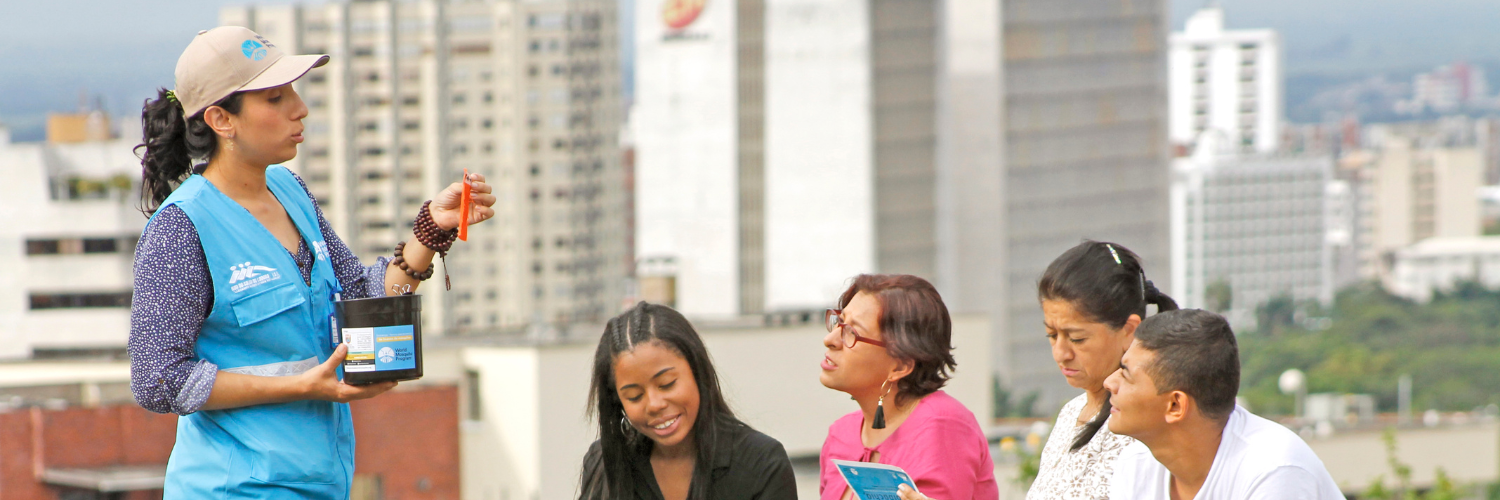Published date: 25 June 2021
We talk a lot about scaling our method.
We have the solution, we’ve shown it works, so let’s go take it to the people. Easier said than done…
Thankfully, WMP is blessed to have some very bright people working on a number of ingenious ways to take our method and our mosquitoes as far and as wide and as quickly as possible.
Traditionally, our distribution methods are ground-based. That is, we take them out – as adults or eggs – in cars, motorbikes, tuk-tuks or by foot to selected release points within our project sites. An effective method in most urban settings but not all of the communities we aim to protect have the roads and pathways to provide access where it’s needed.
Perhaps the most innovative approach to mosquito deployment ever
The key to this distribution method is the release mechanism attached to the drone. It’s a beautifully complex system of electronics, belts, compartments and actuators. Designed and refined to ensure the maximum number of Wolbachia-carrying mosquitoes are set free over specifically planned areas from the appropriate height and at the correct temperature to ensure that they survive, mate and establish.
Dr Ya-Hsun Lin is a senior researcher for WMP at Monash University in Melbourne.
“One of the biggest challenges was to find a way in which large quantities of mosquitoes can be chilled, collected and packed into the release mechanism,'' she says. “Mosquitoes can’t stay too long in the cold, otherwise they take forever to wake up, therefore reducing the survival rate. We had to rethink how we rear mosquitoes and how we load them into the release mechanisms so that the chilling time is minimized. After multiple trial and errors, I think we are quite close to how we want it to work.”
The first set of tests were conducted in Fiji in 2018 and showed promising results. Local ‘pilots’ were trained and successfully launched WMPs first ever air supply of mosquitoes. The flight established that the number of mosquitoes and the dispersal range from air is similar to what it is on the ground. It also required that new protocols were developed for immobilising and handling adult mosquitoes. And it succeeded in ensuring some Wolbachia establishment in the mosquito population where the flights took place.
Since then, there have been further developments in the technology with more test flights on the horizon.
“Fiji taught us valuable lessons in terms of reliability and performance,” says Product Development Manager, Al Joubert. “We pulled apart the mechanism and rebuilt it from the ground up. Now we have a mechanism with almost double the capacity, much higher dosing accuracy and significantly increased robustness. Our next challenge is to integrate this mechanism into a long range flying platform that can cover much larger areas.”
For now delivery via UAV is still a work in progress but there’s little doubt that the technology will one day be a key piece of WMP’s arsenal in the fight against mosquito-borne disease. Director of Product Development and Supply at WMP, Jérémie Gilles, sees aerial distribution as being crucial to the program’s ambitions to scale.
“If we manage to demonstrate the proof of concept, that we can release adult mosquitoes from the air at scale, it really removes so many of the constraints from the ground – the traffic, the mountains, the people… But more importantly it could remove 50% of the cost and make WMP deployment methods more robust delivering high quality wolbachia infected Aedes aegypti,” he says.
“Deployment using aerial releases will require new talented staff like pilots and less resources on the ground, making this a cost effective solution. So if you look at how we are going to scale up our deployment method to reach our targets, this could potentially be the best solution. However, there is regulation. There is still a pathway and ongoing investigation on how this solution can be used in cities. So there will likely be a combination of different methods for cities but for rural or semi-rural areas we are close to being able to use this technology now.”

